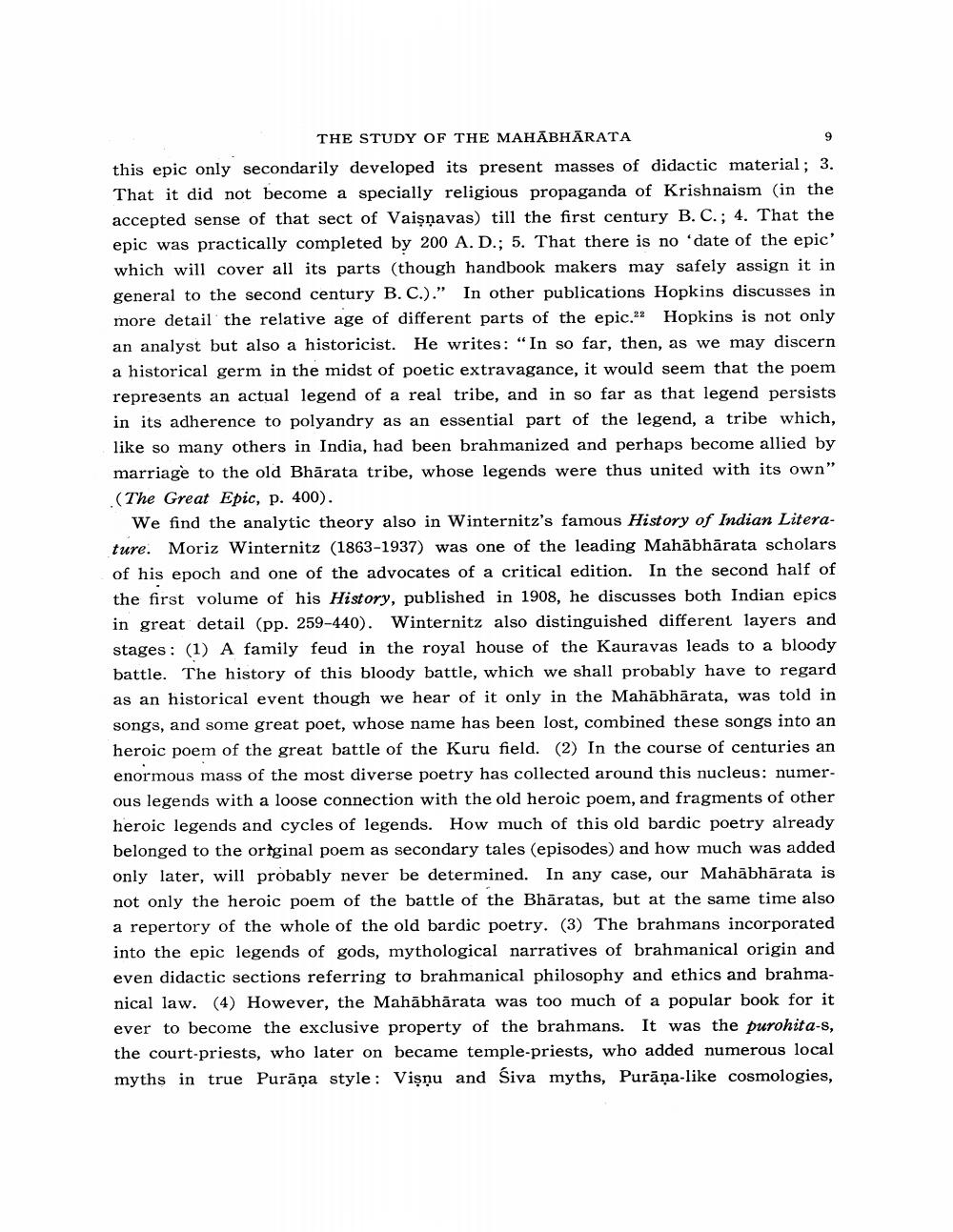Book Title: Study Of Mahabharata Author(s): J W De Jong Publisher: J W De Jong View full book textPage 9
________________ THE STUDY OF THE MAHABHARATA this epic only secondarily developed its present masses of didactic material ; 3. That it did not become a specially religious propaganda of Krishnaism (in the accepted sense of that sect of Vaisnavas) till the first century B. C.; 4. That the epic was practically completed by 200 A. D.; 5. That there is no 'date of the epic' which will cover all its parts (though handbook makers may safely assign it in general to the second century B. C.)." In other publications Hopkins discusses in more detail the relative age of different parts of the epic.22 Hopkins is not only an analyst but also a historicist. He writes: "In so far, then, as we may discern a historical germ in the midst of poetic extravagance, it would seem that the poem represents an actual legend of a real tribe, and in so far as that legend persists in its adherence to polyandry as an essential part of the legend, a tribe which, like so many others in India, had been brahmanized and perhaps become allied by marriage to the old Bhārata tribe, whose legends were thus united with its own" (The Great Epic, p. 400). We find the analytic theory also in Winternitz's famous History of Indian Literature. Moriz Winternitz (1863-1937) was one of the leading Mahābhārata scholars of his epoch and one of the advocates of a critical edition. In the second half of the first volume of his History, published in 1908, he discusses both Indian epics in great detail (pp. 259-440). Winternitz also distinguished different layers and stages: (1) A family feud in the royal house of the Kauravas leads to a bloody battle. The history of this bloody battle, which we shall probably have to regard as an historical event though we hear of it only in the Mahābhārata, was told in songs, and some great poet, whose name has been lost, combined these songs into an heroic poem of the great battle of the Kuru field. (2) In the course of centuries an enormous mass of the most diverse poetry has collected around this nucleus: numerous legends with a loose connection with the old heroic poem, and fragments of other heroic legends and cycles of legends. How much of this old bardic poetry already belonged to the original poem as secondary tales (episodes) and how much was added only later, will probably never be determined. In any case, our Mahābhārata is not only the heroic poem of the battle of the Bhāratas, but at the same time also a repertory of the whole of the old bardic poetry. (3) The brahmans incorporated into the epic legends of gods, mythological narratives of brahmanical origin and even didactic sections referring to brahmanical philosophy and ethics and brahmanical law. (4) However, the Mahābhārata was too much of a popular book for it ever to become the exclusive property of the brahmans. It was the purohita-s, the court-priests, who later on became temple-priests, who added numerous local myths in true Purāņa style : Vişnu and Siva myths, Purāņa-like cosmologies,Page Navigation
1 ... 7 8 9 10 11 12 13 14 15 16 17 18 19
